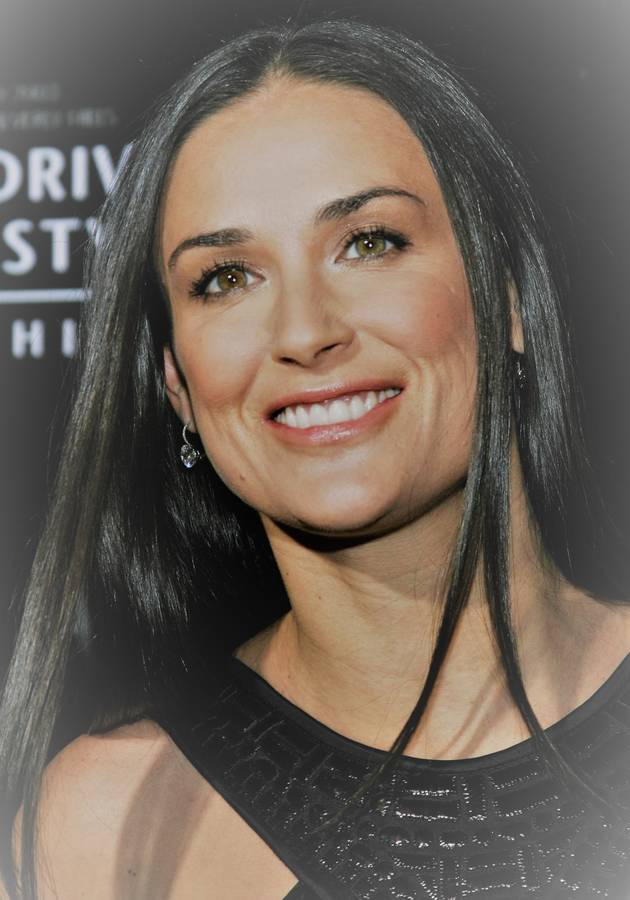A compilation of four interviews and 16 essays by some of the world’s most renowned thought leaders – among them, Gretchen Rubin, Cal Newport, and Tony Schwartz – “Manage Your Day-to-Day” is a “guide to producing great creative work in the Age of Distraction.” As its editor extraordinaire Jocelyn K. Glei writes in the book’s preface, the anthology purposefully “assembles different insights around four key skill sets” so that you can “come at the problems and struggles of this new world of work from as many angles as possible.”
The skill sets explored are: building a rock-solid daily routine, taming your tools (before they tame you), finding focus in a distracted world, and sharpening your creative mind. Get ready to delve into each of these four areas of creative endeavor; hopefully, they will guide you to a customized solution to your problems – “an idiosyncratic combination of strategies based on your own work demands, habits, and preferences!”
Building a rock-solid routine
“80% of success is showing up,” Woody Allen said once. It may sound funny, but it isn’t really a joke: as Glei writes, “How, when, and where you show up is the single most important factor in executing on your ideas.” At the end of the day, routines start with showing up; building one has less to do with inspiration and free time than it does with prioritizing, persistence and consistency.
At least that’s what creative coach Mark McGuinness believes in. “If you want to create something worthwhile with your life,” he writes, “you need to draw a line between the world’s demands and your own ambitions.” After all, if you’re not careful, there’s a good chance that you’ll end up spending the best part of your day working on other people’s priorities. Why not spend it on yourself? It’s fairly easy: you just need to force yourself to switch to creative work first, and put reactive work second on your agenda. Translation: get your most important work done in the morning and only reply to emails and phone messages afterward.
Gretchen Rubin, the author of several bestsellers, has been doing that for quite some time. A firm believer in the power of showing up, she writes every single day, including weekends, holidays, and vacations. She learned a while ago that the best way to make difficult things easier was by making them more frequent. Frequency, she claims, sparks creativity and fosters productivity, while keeping the pressure off and ideas fresh. Most importantly, frequency nurtures frequency. So, even if you do just a little bit each day, over the course of several months or years, you will inevitably get a lot done.
Of course, you must never forget that your routines exist for you, and not the other way around. In other words, if your routines are energy-draining, it’s them that need to be changed – not you. No routine would ever work if it doesn’t recognize renewal as “a critical aspect of both effectiveness and sustainability,” says Tony Schwartz, president and CEO of the Energy Project and the author of “Be Excellent at Anything.” As counterintuitive as it might sound, your productivity depends on you getting more sleep and introducing more breaks into your schedule. “If you really want to be good,” Nobel Prize winner Paul Nurse once said, “you mustn’t work too hard.“
Also, you mustn’t get distracted by “the buzz and whir” of the world around you. Allow yourself to be alone with your thoughts from time to time, advises simplicity blogger and sworn minimalist Leo Babauta. “Even a small time set aside for solitude each day,” he writes, “can make an enormous difference” in your life. Combine that with a simple meditation session, and it will also make an enormous difference in the way you see the world. And that’s where creativity starts – originality, after all, is just another word for having a different worldview.
Finding focus in a distracted world
Our world is filled with distractions. That’s why, in the words of Glei, “attention is a competitive advantage.” Cal Newport, the author of “Deep Work” and “So Good They Can’t Ignore You” has been saying that for quite some time. Back in 2007, at the age of 25, he started the Study Hacks blog where he writes, to this day, about “how to perform productive, valuable and meaningful work in an increasingly distracted digital age.” His most effective solution? Daily focus blocks.
A focus block is nothing more than a pre-scheduled appointment with yourself – that is to say, a substantial chunk of time that you block off from distractions and dedicate to applying “sustained focus to your most important tasks.” The key twist here is that you treat your focus blocks the same way you would your meetings, from marking them on your calendar to using them as a socially acceptable excuse when someone tries to schedule something else during these times. However, be aware that setting aside time for uninterrupted focus is only half the battle. “The other half,” writes Newport, “is resisting distraction. This means: no email, no Internet, and no phone.” It may take you some time to get there – especially if you’ve been “immersed in distraction for years” – but it will be more than worth it in the end.
Take Jonathan Franzen, for example. To write his bestselling novel “Freedom,” he locked himself away in “a sparsely furnished office” and surgically destroyed the Ethernet port of his laptop with superglue, after first stripping it of its wireless card. As extreme as Franzen may have gone with his focus blocks, as psychologist Christian Jarrett explains, he “demonstrated shrewd insight into human fallibility.” Simply put, our minds are highly susceptible to distraction, so it’s not smart to give them even a slight chance to become sidetracked. Sidetrack is the right word here, because – as far as attention-seeking activities go – “There’s no such thing as multitasking, only task switching.” In other words, doing two things at once is not only ineffective, but impossible as well.
What’s also impossible is finding the ideal conditions. “Waiting for everything to be perfect,” writes bestselling author Erin Rooney Doland, “is almost always an exercise in procrastination.” Life is never going to be a walk in the park, she explains further, so if you really want to produce something worthwhile in your life, you better learn to produce it amidst chaos. That may mean either a lot of Franzen-like self-control techniques or mindful, rather than mindless, hard work.
American entrepreneur Scott Belsky is so behind this latter idea that he suggests you make mindfulness your top priority in life. “Alternate periods of connectedness with periods of truly being present,” he advises. “Create windows of non-stimulation in your day [and] use this time to think, to digest what you’ve learned, and to plan.” Finally, he advises creative minds to stay open to the possibilities of serendipity. “By being fully present where you are,” Belsky writes, “you let chance (and the curious universe we live in) work its magic.”
Taming your tools (before they tame you)
There is an old Persian saying that goes something like this: the wise man cooks his dinner on the same fire that burns the fool’s tent. Shakespeare’s Hamlet makes a similar point: “There is nothing either good or bad, but thinking makes it so.” In other words, it’s not Facebook or Twitter that is the problem – it’s you that allows them to be. “Technology should be a tool,” Glei reminds us, “but if we do not keep our wits about us, it can easily become our taskmaster.”
There are several ways you can keep things under control. American businessman and bestselling author Aaron Dignan suggests you start with your inbox. According to a recent study, the average knowledge worker spends about third of his week either writing, reading, or responding to emails. That’s a lot of time! To reclaim it, first you must become more acquainted with your “elusive complex goals” in life. Once you do, write them down and tape the list to your desk to remind you what you should be spending your time on. In time, you’ll learn to make your complex goals a priority and then you’ll be able to rummage through your inbox more mindfully. Even then, however, you won’t have enough time to go through all of your starred articles. So, let them go: for your goals to live, the opportunities that distract you from your quest must die.
Arguably, taming your inbox is much easier than taming your social media services. But it doesn’t have to be, says Lori Deschene, founder of the “Tiny Buddha” community blog and author of the same-titled book. Facebook, Twitter and Instagram are there to help you expand your business and stay informed and entertained. You can also use them to learn new things from people you admire or share what you’ve learned with interested individuals. Then why are you using them purposelessly? Don’t just browse social media sites when you’re bored: get acquainted with their potential and promise to yourself that you’ll only log on with clear intentions. After all, if you’re not aware of why you’re using something, you are not its master, but its slave.
Writer and consultant Linda Stone says that the other half of this master-slave story is even darker. In February 2008, after months of research, she coined the phrase “screen apnea” to describe “the temporary cessation of breath or shallow breathing while sitting in front of a screen, whether a computer, a mobile device, or a television.” The problem with shallow breathing is that it triggers the sympathetic nervous system toward a fight-or-flight state, making us feel anxious and impulsive. So, the more you sit in front of a screen, the more your body wants it – even though it feels less satisfied. Stone advises breaking this vicious cycle through diaphragmatic breathing, martial arts, and yoga, all of which have the potential to activate the parasympathetic nervous system and thereby soothe us.
They also have the potential to help us reclaim our self-respect, as designer and filmmaker James Victore explains in a brief essay. He believes that the main problem of the modern world is that it muddles the distinction between urgent and important, tricking us into forgetting our priorities in the process. “When we choose urgent over important,” Victore writes, “what we are really choosing is other people’s priorities over our own.” In other words, being busy is pretty much a synonym for working mindlessly. You must find the time in your day and life “to think, reflect, and imagine.” For that is what makes us human.
Sharpening your creative mind
Just like the greatest enemy of love isn’t hatred, but indifference, the greatest enemy of creativity isn’t technology, but rather standing still. That’s why Todd Henry, bestselling author of “The Accidental Creative,” suggests you should introduce “unnecessary creation” into your schedule. By “unnecessary creation” he means “engaging in the creative act on your own terms” with no concern about any practical benefits or even the result.
Unnecessary creation, he explains further, can be immensely beneficial. Above all, it will give you “the freedom to explore new possibilities and follow impractical curiosities.” Second, it will allow you “to take risks and develop new skills that can later be applied to your on-demand creating.” Last but not least, it will provide you with “a forum for the pursuit of voice, and a reminder that you are not the sum of what you make.” Our age may be hopelessly practical; you don’t have to be. At least not at all times.
But what do you do when you have to be creative and it’s just not coming? That’s the problem Scott McDowell tackles in a very brief essay titled “Training Your Mind to Be Ready for Insight.” His suggestions? First and foremost, try to disengage from the task at hand. For example, do what Henry Miller did and explore unfamiliar sections of the city on your bike. Or just rest instead – it has been shown to stimulate creativity. The same holds true for exercising and meditating. If none of these tactics work, then try to power through the block by imposing certain limits and constraints on yourself. This will put your brain into the necessary problem-solving mode. “Too big a playing field can muddle the results,” writes McDowell; “a set of limitations is often the catalyst that sets creativity free.”
Conversely, what can sometimes imprison creativity is perfectionism. Entrepreneur and writer Elizabeth Grace Saunders believes that there are two kinds of creative minds on this planet: perfectionists and pragmatists. Contrary to what many might say, Saunders doesn’t think that either strategy is better than the other. She merely advises artists to choose wisely the strategy they’ll use at different stages of their creative process. Because sometimes being a perfectionist can get you stuck; other times being a pragmatist can cost you some quality and excellence.
At all times, however, be conscious of the fact that creative blocks are “an occupational hazard for creative professionals.” Thomas Mann, Frida Kahlo, Mark Twain, Iggy Pop – none of them was immune to creative blocks. So, the next time you have to deal with one, “be aware that you’re in a good company.” If your inspiration tank is empty, then take a break – just like Twain did when writing “Tom Sawyer.” If you have personal problems, turn them into art: that’s what Frida Kahlo did. If you have an emotional barrier that prevents you from doing this, give yourself permission to express your problems, by saying that you’ll not make your work public; decide if you’ll keep your promise to yourself once you’re finished. Either way, if you are an artist, don’t ever forget that you’re born to make virtue out of necessity and well-equipped to achieve as much as you can with what you have. History proves that that’s more than enough.
Final notes
Nicely edited and beautifully designed, “Manage Your Day-to-Day” fails to offer some new and original advice when it comes to creativity and productivity. But, then again, its objective is simultaneously humbler and bolder than that: to assemble the best insights from the most respected thought leaders around several key skill sets one must master to succeed. This it does impeccably.
The book’s smart structure and clean design – as well as the illuminating Q&A sessions sandwiched between the essays – make “Manage Your Day-to-Day” a “small gem of a book,” one “you can dip into whenever you need encouragement to get or keep yourself going” (Success Magazine).
Excellent both as a boost-your-own-productivity toolkit and as a gift for anyone who is on a quest to achieve the same.
12min tip
Prioritize your own creativity. Set aside time for yourself and your dreams. Make it compulsory and distraction-free. If necessary, destroy the Ethernet port of your laptop. We’re joking, of course. But Jonathan Franzen isn’t. And he’s one of the greatest American writers today.





























